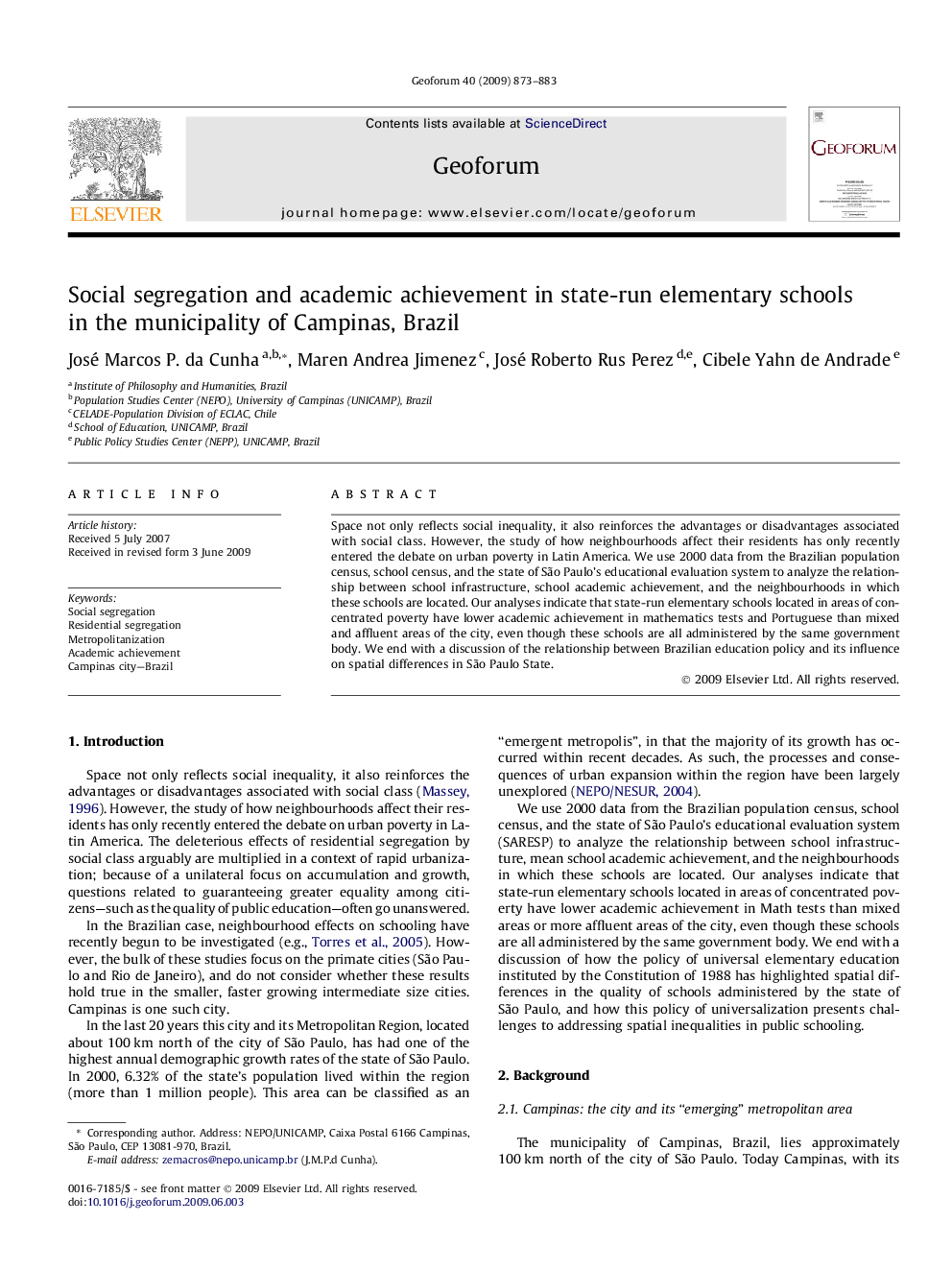| Article ID | Journal | Published Year | Pages | File Type |
|---|---|---|---|---|
| 5074823 | Geoforum | 2009 | 11 Pages |
Abstract
Space not only reflects social inequality, it also reinforces the advantages or disadvantages associated with social class. However, the study of how neighbourhoods affect their residents has only recently entered the debate on urban poverty in Latin America. We use 2000 data from the Brazilian population census, school census, and the state of São Paulo's educational evaluation system to analyze the relationship between school infrastructure, school academic achievement, and the neighbourhoods in which these schools are located. Our analyses indicate that state-run elementary schools located in areas of concentrated poverty have lower academic achievement in mathematics tests and Portuguese than mixed and affluent areas of the city, even though these schools are all administered by the same government body. We end with a discussion of the relationship between Brazilian education policy and its influence on spatial differences in São Paulo State.
Related Topics
Social Sciences and Humanities
Economics, Econometrics and Finance
Economics and Econometrics
Authors
José Marcos P. da Cunha, Maren Andrea Jimenez, José Roberto Rus Perez, Cibele Yahn de Andrade,
